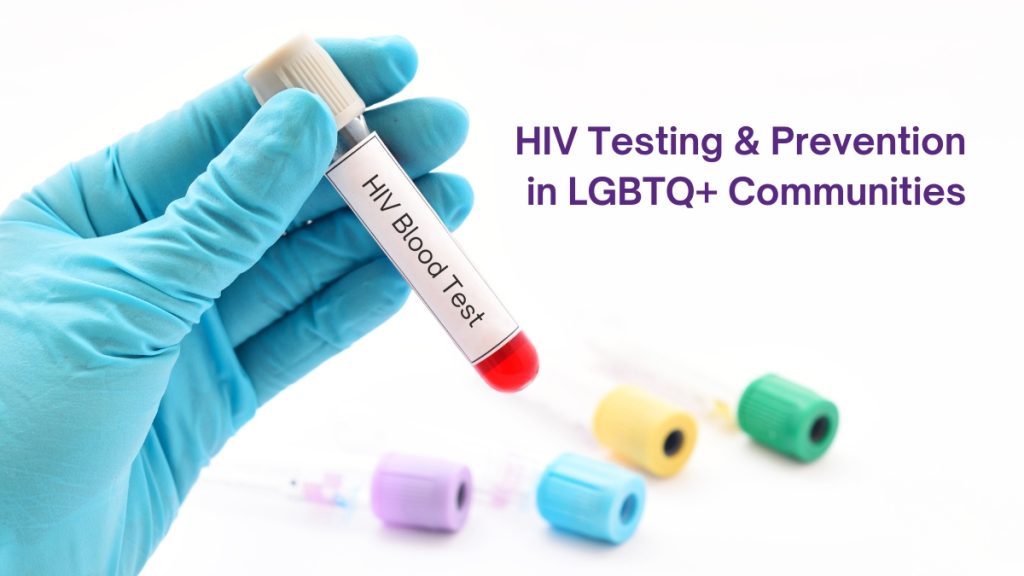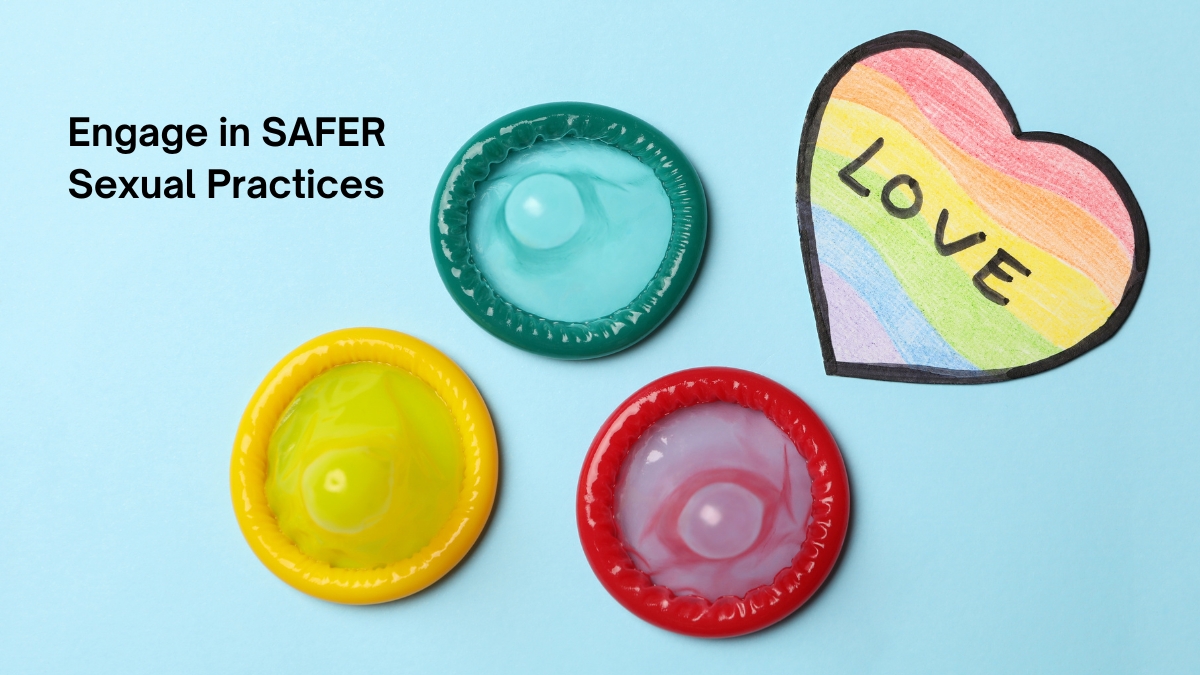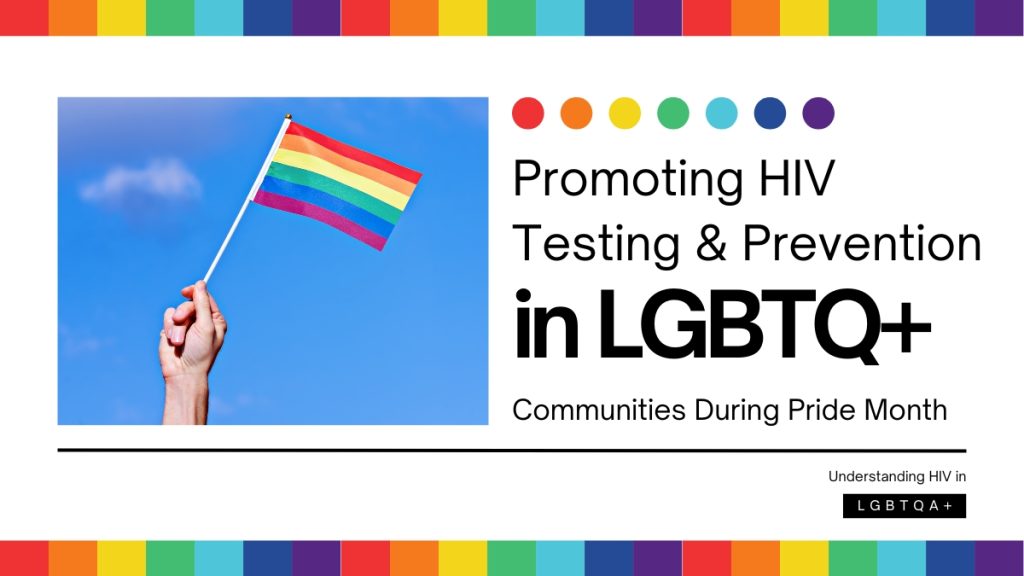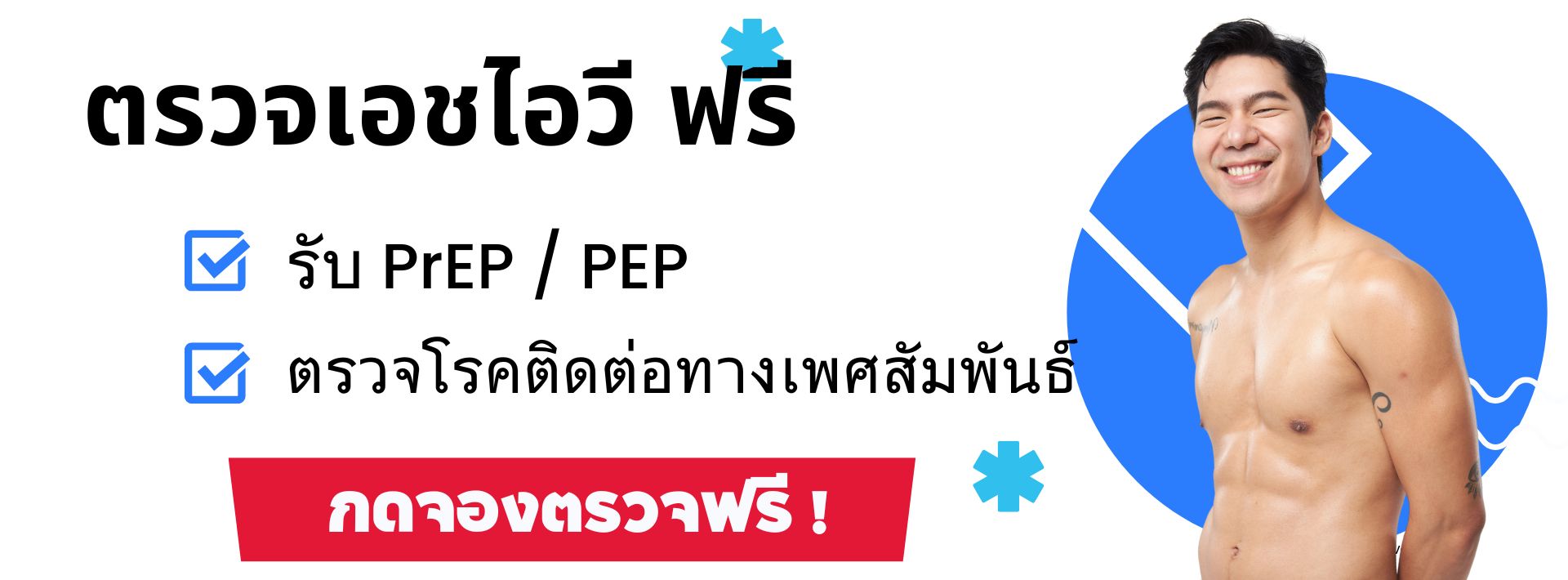Celebrate Pride Month by prioritizing HIV testing and prevention in LGBTQ+ communities. By raising awareness and promoting regular testing, we can empower individuals to take control of their sexual health. Engage in outreach programs, educational campaigns, and community events that foster inclusivity and provide resources for HIV prevention. Advocate for accessible and stigma-free testing options, including home testing kits and confidential clinics. Encourage open conversations about sexual health, risk reduction strategies, and the importance of consistent condom use. Promote the availability of pre-exposure prophylaxis (PrEP) and post-exposure prophylaxis (PEP) as effective prevention methods. Together, let’s ensure that LGBTQ+ individuals have the knowledge, support, and resources needed to lead healthy and fulfilling lives.
Understanding HIV in LGBTQ+ Communities During Pride Month
HIV (Human Immunodeficiency Virus) is a virus that weakens the immune system and can lead to AIDS (Acquired Immunodeficiency Syndrome). While HIV can affect anyone regardless of their sexual orientation or gender identity. Certain factors have contributed to a higher prevalence of HIV within LGBTQ+ communities. It’s important to note that the following information is based on data available up until my knowledge cutoff in September 2021. The situation may have evolved since then.
- Stigma and Discrimination: LGBTQ+ individuals have historically faced stigmatization and discrimination, which can contribute to a higher vulnerability to HIV. Social stigma may prevent individuals from accessing HIV prevention services, testing, and treatment due to fear of judgment or rejection.
- Risk Factors: Several behavioral factors may increase the risk of HIV transmission within LGBTQ+ communities. These include unprotected sexual activity, a higher number of sexual partners, and substance abuse. Which can impair judgment and lead to riskier behaviors.
- Lack of Comprehensive Sex Education: In many places, comprehensive sex education programs that address the specific needs of LGBTQ+ individuals are lacking. This can result in limited knowledge about HIV prevention, safer sex practices, and how to access testing and treatment.
- Barriers to Healthcare: LGBTQ+ individuals may face barriers to accessing healthcare, including lack of culturally competent care. Discrimination from healthcare providers, and limited availability of LGBTQ+-friendly healthcare services. These barriers can prevent timely HIV testing and linkage to care.
- Transgender Individuals: Transgender individuals may face additional challenges regarding HIV prevention and care. Some transgender individuals engage in risky behaviors, such as sex work or substance abuse, due to limited employment opportunities and discrimination, which can increase HIV risk.
Exploring HIV Awareness in LGBTQ+ Communities During Pride Month
It’s crucial to recognize the diversity within LGBTQ+ communities, as experiences and risk factors can vary significantly among different subgroups. Efforts to address HIV in LGBTQ+ communities should involve comprehensive sex education, destigmatization, accessible healthcare services. Targeted prevention and outreach programs tailored to the specific needs of LGBTQ+ individuals. It’s important to consult up-to-date resources and organizations that specialize in HIV prevention and LGBTQ+ health. To stay informed about the current state of HIV in LGBTQ+ communities and the most effective strategies for prevention and care.

Promoting HIV Testing During Pride Month
Promoting HIV testing is a crucial step in preventing the spread of HIV and ensuring early diagnosis and access to treatment. Here are some strategies to encourage HIV testing:
- Education and Awareness: Increase public awareness about the importance of HIV testing, the benefits of early diagnosis, and the availability of confidential and accessible testing services. Educate communities about the modes of HIV transmission and challenge myths and misconceptions surrounding HIV.
- Normalizing Testing: Normalize HIV testing as a regular part of healthcare. Encourage individuals to view HIV testing as routine and destigmatize the process. Emphasize that HIV testing is not an indicator of someone’s character or behavior but a responsible health practice for everyone.
- Confidentiality and Privacy: Assure individuals that HIV testing is confidential and their privacy will be protected. Highlight that testing is available at various locations, including healthcare clinics, community health centers, and anonymous testing sites, ensuring that people can choose a comfortable and convenient testing environment.
- Targeted Outreach: Develop targeted outreach programs that reach populations disproportionately affected by HIV, including LGBTQ+ communities, people who inject drugs, sex workers, and communities of color. Collaborate with community organizations, healthcare providers, and community leaders to create culturally appropriate messages and deliver them through trusted channels.
- Peer Support and Testimonials: Utilize peer support programs and personal testimonials from individuals who have undergone HIV testing. Peer advocates can share their own experiences to reduce anxiety and stigma associated with testing, helping to increase acceptance and uptake among their peers.
Advocating for HIV Testing & Awareness
- Integration and Accessibility: Integrate HIV testing services into various healthcare settings, including primary care clinics, sexual health clinics, and community-based organizations. Offer testing during routine medical check-ups, family planning visits, and other relevant healthcare encounters. Expand the availability of self-testing kits and home-based testing options, where legally permitted.
- Collaboration and Partnerships: Collaborate with local healthcare providers, community-based organizations, schools, and other stakeholders to coordinate efforts in promoting HIV testing. Pool resources and knowledge to reach a wider audience and ensure a comprehensive approach to testing and prevention.
- Digital and Social Media: Leverage digital platforms and social media to disseminate information about HIV testing. Utilize targeted online advertising, informational videos, and interactive tools to engage with diverse populations and promote testing services.
- Incentives and Benefits: Consider providing incentives such as free or discounted testing, gift cards, or vouchers for individuals who undergo HIV testing. Offer benefits such as linkage to care, counseling services, and access to support groups for those who test positive.

HIV Prevention Strategies
HIV prevention strategies aim to reduce the transmission of the virus and lower the risk of acquiring HIV. Here are some key HIV prevention strategies:
- Safe Sex Practices: Engage in safer sex practices to reduce the risk of HIV transmission. This includes consistent and correct use of condoms during sexual activity, including vaginal, anal, and oral sex. Water-based lubricants can also help reduce the risk of condom breakage.
- HIV Testing and Counseling: Regular HIV testing is important to know one’s HIV status. Testing allows for early detection and timely access to treatment if needed. Additionally, HIV counseling can provide information about risk reduction, prevention strategies, and support for those living with HIV.
- Pre-Exposure Prophylaxis (PrEP): PrEP involves taking antiretroviral medication (usually a combination of tenofovir and emtricitabine) on a daily basis to prevent HIV infection. PrEP is highly effective when used consistently and in conjunction with other prevention methods. It is recommended for individuals at high risk of HIV, such as those with HIV-positive partners or engaging in condomless sex.
- Post-Exposure Prophylaxis (PEP): PEP involves taking antiretroviral medication after a potential exposure to HIV, such as unprotected sex or needle-sharing. PEP should be initiated as soon as possible, ideally within 72 hours of exposure, and continued for a month. PEP is a time-limited emergency measure and should not be considered a regular prevention method.
- Harm Reduction for People Who Inject Drugs (PWID): Implement harm reduction strategies to reduce the risk of HIV transmission among PWID. This includes access to sterile needles and syringes, opioid substitution therapy, and overdose prevention programs. Providing education and support for safer injection practices can also help reduce the risk of HIV transmission.
Promoting Effective Approaches for HIV Prevention
- Elimination of Mother-to-Child Transmission (MTCT): Prevention of MTCT involves ensuring that pregnant individuals living with HIV receive antiretroviral treatment to suppress the virus. Additionally, delivering the baby via cesarean section and avoiding breastfeeding can further reduce the risk of MTCT.
- Behavioral Interventions: Behavioral interventions aim to promote safer sexual practices, increase HIV knowledge, and change risky behaviors. These interventions can be delivered through individual counseling, group sessions, community outreach programs, or online platforms.
- Comprehensive Sex Education: Implement comprehensive sex education programs that provide accurate and age-appropriate information about HIV, other sexually transmitted infections (STIs), contraception, and healthy relationships. This education should be inclusive, affirming, and tailored to diverse populations, including LGBTQ+ individuals.
- Addressing Stigma and Discrimination: Combat stigma and discrimination associated with HIV/AIDS, as they can create barriers to prevention efforts and discourage individuals from seeking testing and treatment. Promote acceptance, understanding, and inclusion through community education and awareness campaigns.
- Engaging Key Populations: Tailor prevention efforts to address the specific needs of key populations disproportionately affected by HIV, such as LGBTQ+ communities, sex workers, people who inject drugs, and communities of color. This includes providing targeted outreach, culturally competent care, and accessible prevention services.
During Pride Month, it is crucial to promote HIV testing and prevention in LGBTQ+ communities. By raising awareness, addressing stigma, and providing accessible testing services, we can encourage individuals to prioritize their sexual health. Comprehensive sex education, targeted outreach programs, and peer support can empower LGBTQ+ individuals. To make informed decisions and engage in safer sexual practices. Collaboration among healthcare providers, community organizations and LGBTQ+ leaders is key. To tailoring prevention strategies to the unique needs of these communities. Let’s celebrate Pride Month by promoting HIV testing, advocating for inclusive healthcare, and fostering a supportive environment that prioritizes the well-being of LGBTQ+ individuals. Together, we can work towards a future free from HIV/AIDS-related disparities.

